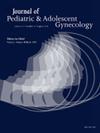Menstrual Health Education: School Health Curriculum Topics by Grade Level Recommended by Specialized Medical Professionals in Menstrual Health Clinics
IF 1.7
4区 医学
Q3 OBSTETRICS & GYNECOLOGY
引用次数: 0
Abstract
Study Objective
Evidence-based menstrual health education is not mandated in any US state or territory. Aspects of normal and abnormal menstruation impact quality of life and educational engagement, but many youths are not prepared to know when to seek medical help. We sought to determine which topics should be included in a third- through eighth-grade school-based menstrual health curriculum.
Methods
We conducted a cross-sectional online survey of medical professionals who care for patients with menstrual problems. We asked participants to indicate the top 3 menstrual health topics by grade, and we compared the most common responses by year. We also solicited general comments about the curriculum content.
Results
Surveys from 55 medical professionals met the criteria for analysis. The topics selected most frequently were normal and abnormal menstruation, reproductive anatomy, puberty timeline, and menstrual products. Most recommended the topics of puberty timeline (38, 69.1%) and reproductive anatomy (34, 61.8%) for third grade, introducing normal menstruation (31, 56.4%) and menstrual products (24, 46.3%) in fourth grade, and abnormal menstruation (27, 49.1%) in sixth grade. More complex topics, such as world cultures around menstruation (14, 25.5%) and period poverty (11, 20.0%), were preferred for eighth grade. Many providers emphasized the importance of teaching normal vs abnormal menstruation in a school health curriculum.
Conclusion
Medical professionals provided recommendations for a school-based menstrual health curriculum that introduces topics at developmentally appropriate ages from a medical perspective, teaches basic menstrual symptom management, and instructs on warning signs for abnormal menstruation.
月经健康教育:月经健康诊所专业医务人员推荐的各年级学校健康课程主题。
研究目的:美国各州或地区均未强制要求开展循证月经健康教育。月经的正常和异常对生活质量和教育参与度都有影响,但许多青少年不知道何时寻求医疗帮助。我们试图确定三至八年级的校本月经健康课程应包括哪些主题:我们对护理月经问题患者的医疗专业人员进行了横向在线调查。我们要求参与者按年级列出前三个月经健康主题,并比较了各年级最常见的回答。我们还征求了对课程内容的一般意见:结果:55 位医务人员的调查符合分析标准。最常被选中的主题是正常和异常月经、生殖解剖、青春期时间表和月经用品。大多数人建议三年级学习青春期时间表(38 人,69.1%)和生殖解剖(34 人,61.8%),四年级学习正常月经(31 人,56.4%)和月经用品(24 人,46.3%),六年级学习月经异常(27 人,49.1%)。更复杂的话题,如与月经有关的世界文化(14,25.5%)和经期贫困(11,20.0%),则首选在八年级。许多医疗服务提供者强调了在学校健康课程中教授月经正常与异常的重要性:医疗专业人员为学校月经健康课程提供了建议,该课程从医学角度出发,在发育适当的年龄段介绍相关主题,教授基本的月经症状处理方法,并对月经异常的警示信号进行指导。
本文章由计算机程序翻译,如有差异,请以英文原文为准。
求助全文
约1分钟内获得全文
求助全文
来源期刊
CiteScore
3.90
自引率
11.10%
发文量
251
审稿时长
57 days
期刊介绍:
Journal of Pediatric and Adolescent Gynecology includes all aspects of clinical and basic science research in pediatric and adolescent gynecology. The Journal draws on expertise from a variety of disciplines including pediatrics, obstetrics and gynecology, reproduction and gynecology, reproductive and pediatric endocrinology, genetics, and molecular biology.
The Journal of Pediatric and Adolescent Gynecology features original studies, review articles, book and literature reviews, letters to the editor, and communications in brief. It is an essential resource for the libraries of OB/GYN specialists, as well as pediatricians and primary care physicians.

 求助内容:
求助内容: 应助结果提醒方式:
应助结果提醒方式:


